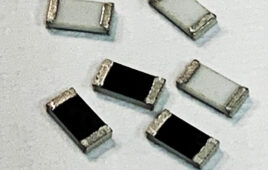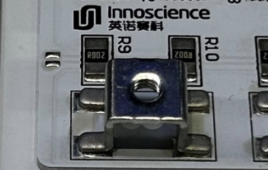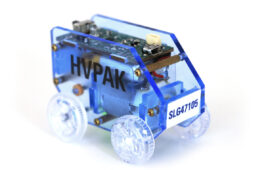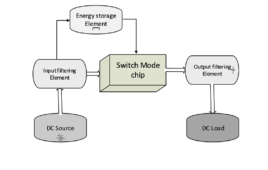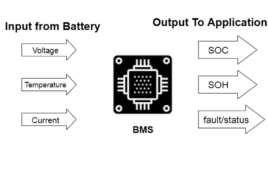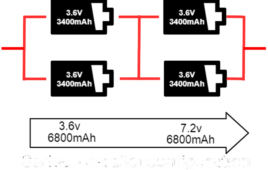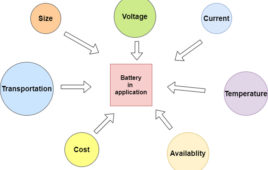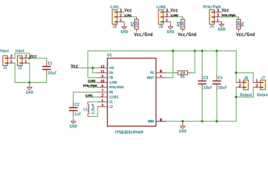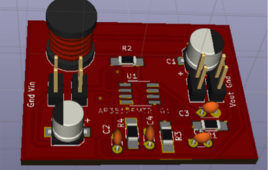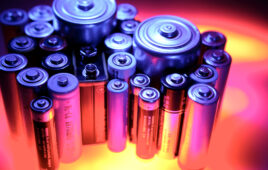For GaN-based battery management for consumer electronics and computer peripherals, the demand for high power and precision is escalating. While a variety of technology options offer lower resistance values suited for these applications, all-metal element resistors, like Stackpole’s CSS/CSSH Series, remain a popular choice despite their higher cost and wider tolerance range of 1% and…
Innoscience launches 100 V GaN IC for 48V/60V battery management systems
Innoscience Technology has launched a new 100V bi-directional member of the company’s VGaN IC family. The first family of VGaN devices rated 40V with a wide on-resistance range (1.2mOhm – 12mOhm) have been successfully deployed in the USB OVP of mobile phones such as OPPO, OnePlus, etc. The new 100V VGaN (INV100FQ030A) can be employed…
Rechargeable toy car with push-to-start/hold-to-stop functionality
This article describes how to create a rechargeable toy car with push-to-start / hold-to-stop (Figure 1) using HVPAK™ SLG47105. The following design provides constant voltage on the motor, regardless of the battery charge and Push-to-Start / Hold-to-Stop capability. Thanks to the Hold-to-Stop functionality, the car automatically turns off when it’s stuck. So, if the child…
How to use a boost converter with a Li-ion battery and BL8530 IC
A major advantage of a switching regulator is that it can boost a lower voltage into a higher one. This type of regulator is also known as a boost or step-up converter. A boost converter is used to step up an input voltage to a higher level as required by a load. This capability is…
Understanding battery management systems
A battery-management system (BMS) is an electronic system or circuit that monitors the charging, discharging, temperature, and other factors influencing the state of a battery or battery pack, with an overall goal of accurately indicating the remaining time available for use. It’s used to monitor and maintain the health and capacity of a battery. Today’s…
Battery configurations (series and parallel) and their protections
A single cell is not sufficient for some devices. To achieve the desired voltage, the cells are connected in series to add the voltage of cells. To achieve the desired capacity, the cells are connected in parallel to get high capacity by adding ampere-hour (Ah). This combination of cells is called a battery. Sometimes battery…
What are the different battery types for specific applications?
In this article, we will learn how to choose a battery according to the specifications and requirements of your application. Some applications need more power and some need to be cheap with less power. There are various factors and parameters that to consider when choosing the best battery for your application. No one battery is…
How to use a buck-boost converter to regulate a Li-ion battery
Nearly every electronic device today relies on a battery as a power source. The dc-dc converter plays a significant role in maintaining the working time of the battery. A buck-boost dc-dc converter is an ideal choice for the most efficient and reliable battery range. The buck-boost converter provides the regulated voltage in the Lithium (Li-ion)…
How do dc-dc converters work?
A DC power supply is used in almost all of devices where a regulated voltage is required. A DC converter implements the process of DC conversion. There are two types of DC converters: Buck converter- Steps down the input source voltage Boost converter – Steps up the input source voltage Conversion topology Linear regulator –…
What to consider when evaluating battery performance
Several important metrics and considerations are important when evaluating battery performance: Cell, module, and pack level: It is important to consider whether the data refers to an individual cell or a complete battery pack when comparing energy and power densities. Cells will always have the highest energy and power for a given size or weight.…
Understanding battery management systems
Electric vehicles (EVs) have many benefits over internal combustion engine vehicles, including superior performance, a high energy density, less pollution, excellent acceleration, and more. But EVs are not perfect. One major drawback is the need for a costly battery system with specific maintenance requirements, including a long charge time. One of the key components of…

